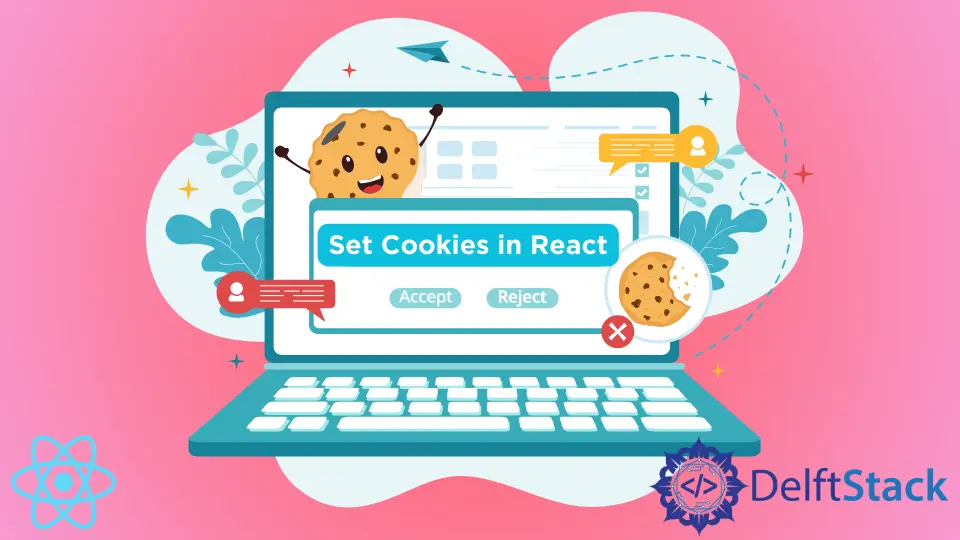How to Set Cookies in React
- Understanding Cookies
- Method 1: Using js-cookie Library
- Method 2: Reading Cookies
- Method 3: Deleting Cookies
- Conclusion
- FAQ

Cookies play a crucial role in enhancing the user experience (UX) of websites. They allow you to store user preferences, session information, and other data that can help tailor the browsing experience.
In this article, we will dive into how to set cookies in React, providing you with practical methods and examples to get started. Whether you’re managing user sessions, tracking analytics, or personalizing content, understanding how to effectively use cookies in your React applications can significantly improve user engagement. Let’s explore the different ways to handle cookies in React and make your web applications more interactive and user-friendly.
Understanding Cookies
Before we jump into the implementation, it’s essential to understand what cookies are and how they function. Cookies are small pieces of data stored on the user’s computer by the web browser while browsing a website. They can store user preferences, session tokens, and other relevant information that can enhance user experience. In React, managing cookies can be done using various libraries or native JavaScript methods.
Method 1: Using js-cookie Library
One of the most popular libraries for handling cookies in React is js-cookie. This library simplifies the process of setting, getting, and deleting cookies. To get started, you first need to install the library.
Installation
You can install js-cookie via npm:
npm install js-cookie
Setting a Cookie
Once you have the library installed, you can easily set a cookie in your React component. Here’s a simple example:
import Cookies from 'js-cookie';
const setCookie = () => {
Cookies.set('user', 'John Doe', { expires: 7 });
};
In this code, we import the js-cookie library and define a function called setCookie. The Cookies.set method is used to create a cookie named ‘user’ with the value ‘John Doe’. The cookie will expire in 7 days.
Output:
Cookie 'user' set with value 'John Doe' and expires in 7 days.
This method is straightforward and efficient, allowing you to easily manage cookies in your application without much hassle. The expires option is particularly useful for controlling how long the cookie will remain valid.
Method 2: Reading Cookies
After setting a cookie, you may want to read its value later. This can be done using the Cookies.get method from the js-cookie library.
Reading a Cookie
Here’s how you can read the cookie we just set:
const getCookie = () => {
const user = Cookies.get('user');
console.log(user);
};
In this example, we define a function called getCookie. The Cookies.get method retrieves the value of the ‘user’ cookie. If the cookie exists, it will log the value to the console.
Output:
John Doe
This method is equally simple and allows you to access stored cookie data whenever needed. It’s particularly useful for personalizing user experiences based on the information stored in the cookies.
Method 3: Deleting Cookies
Sometimes, you may need to delete cookies, especially when users log out or when you want to clear stored data. The js-cookie library makes this process seamless.
Deleting a Cookie
To delete a cookie, you can use the Cookies.remove method. Here’s how you can implement it:
const deleteCookie = () => {
Cookies.remove('user');
};
This function, deleteCookie, will remove the ‘user’ cookie from the browser. Once executed, the cookie will no longer be available.
Output:
Cookie 'user' deleted.
Deleting cookies is important for maintaining user privacy and ensuring that outdated information is not stored. This method allows you to easily manage cookie lifecycle in your application.
Conclusion
Setting, reading, and deleting cookies in React is a straightforward process, especially when using libraries like js-cookie. By following the methods outlined in this article, you can enhance the user experience on your website, manage user sessions, and personalize content effectively. Whether you are developing a simple application or a complex web platform, understanding how to handle cookies will empower you to create more interactive and user-friendly experiences.
FAQ
-
how do cookies work in a web application?
Cookies are small pieces of data stored on the user’s computer that help remember user preferences and session information. -
can i set cookies without a library in React?
Yes, you can use the native JavaScriptdocument.cookieproperty to set and manage cookies. -
what are the advantages of using cookies?
Cookies help enhance user experience by storing preferences, managing sessions, and personalizing content. -
how secure are cookies?
Cookies can be secured using attributes like HttpOnly and Secure, but they can still be vulnerable to attacks like cross-site scripting (XSS). -
how do I clear all cookies in a React application?
You can loop throughdocument.cookieand remove each cookie by setting its expiration date to a past date.
Irakli is a writer who loves computers and helping people solve their technical problems. He lives in Georgia and enjoys spending time with animals.
LinkedIn